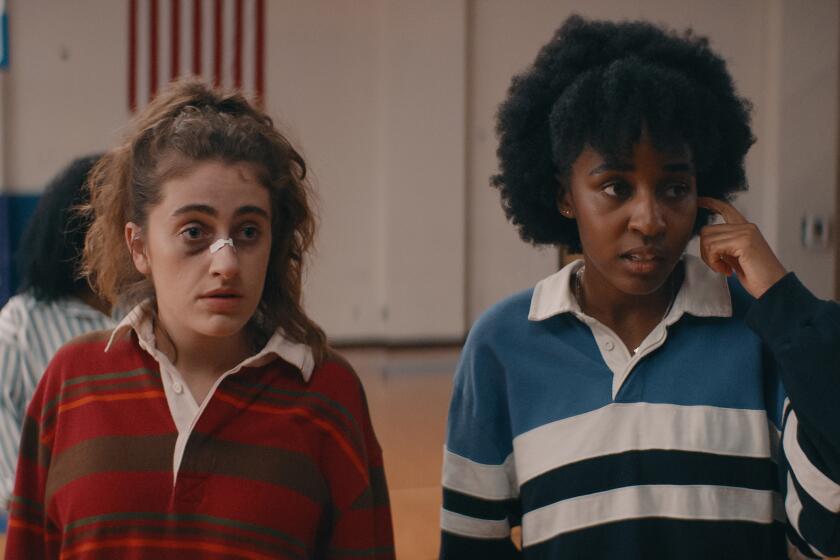Making the violent, funny and very queer ‘Bottoms’: “It’s radical to get to be ourselves”
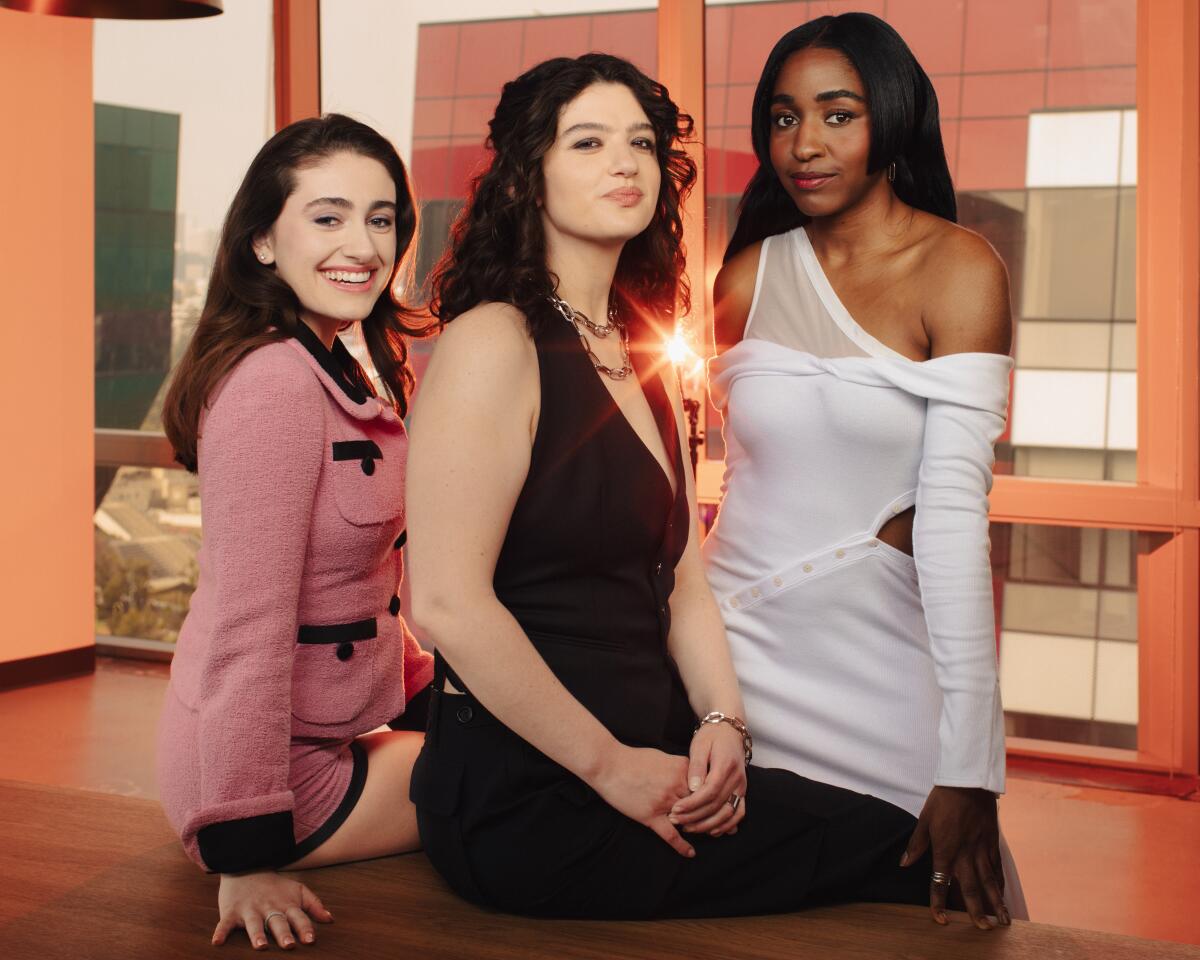
- Share via
Three college friends have gone from putting on comedy shows in grungy NYC basements to being among the most celebrated young talents in Hollywood.
Their latest movie is “Bottoms,” which opens Friday in limited release before expanding on Sept. 1. It has a raucous energy rooted in absurdism, where anything can happen. And while the female-fronted R-rated comedies “No Hard Feelings” and “Joy Ride” both underperformed at the box office this summer, in a post-“Barbie” moment, suddenly the possibility of success seems reawakened.
Starring “Shiva Baby’s” Rachel Sennott and “The Bear’s” Ayo Edebiri, director Emma Seligman’s queered teen comedy puts a wild, violent spin on high school life.
Directed by “Shiva Baby’s” Emma Seligman, the new film features her debut’s breakout star, Rachel Sennott (who also co-wrote the screenplay with Seligman), as well as “The Bear’s” Ayo Edebiri. The two actors play PJ and Josie, high schoolers who are outcasts not because they are lesbians, but because they are kind of weird losers. To gain the attention of a pair of cheerleaders, PJ and Josie start a self-defense class that soon morphs into an out-of-control fight club. Punches are thrown. A car is blown up. The football team may need saving.
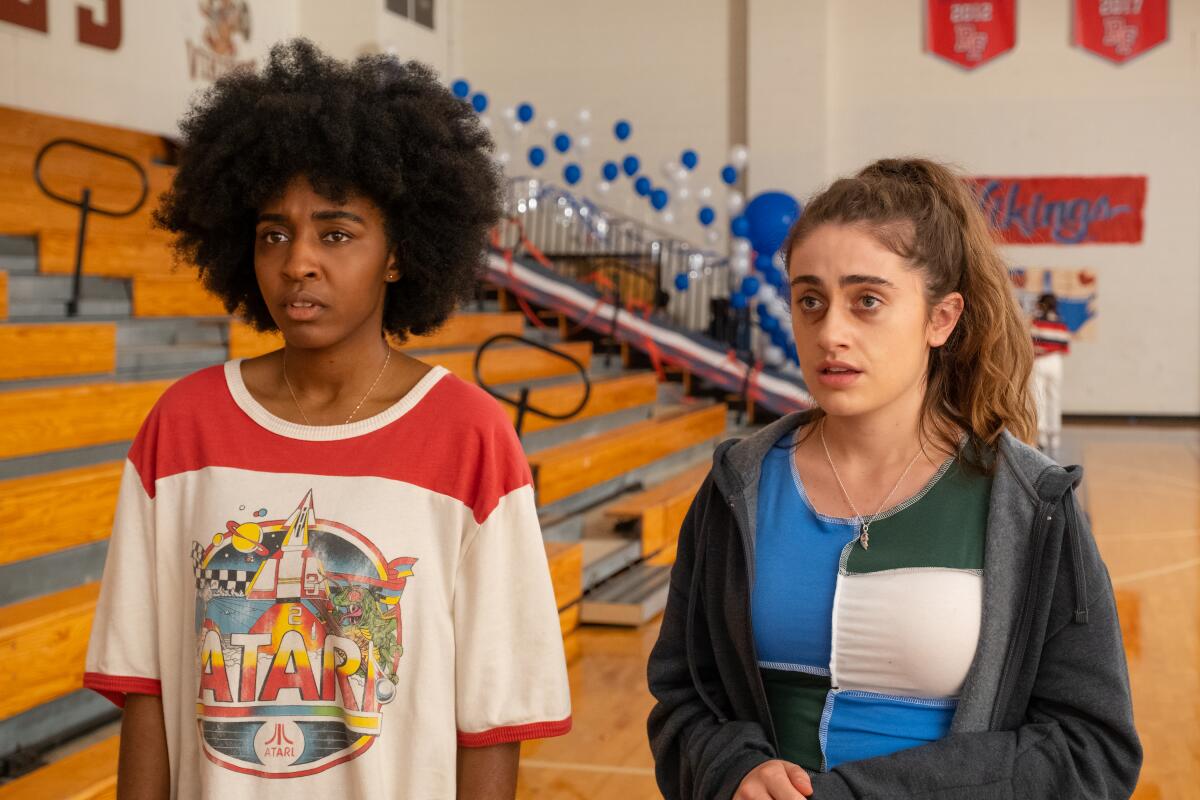
From the stage at the film’s world premiere at the South by Southwest Film and TV Festival in March, Seligman described the film succinctly by saying, “It’s gay, it’s bloody, it’s horny, it’s ridiculous and silly.”
Seligman, Sennott and Edebiri sat for an interview together in a West Hollywood office earlier this summer before SAG-AFTRA went on strike. All of the city seemed laid out by the enormous picture windows in front of them, from the Chateau Marmont to the Griffith Observatory, downtown and beyond.
Edebiri’s small dog, a Chihuahua mix named Gromit, lazed between them on a couch. A comment by one of them brings affirmations and proclamations of “yes” from the other two. They make each other laugh, deeply and often.
Speaking to the film’s title, Seligman says mischievously, “I love a double meaning,” while noting that she also hates coming up with titles. For years, the project was known as “Untitled Gay High School Comedy.”
“We’ve been saying all day that is the title of our book,” said Seligman. “We were joking that all of our photos were us at a desk and it looked like a lean-in girl-boss book cover: ‘Nowhere to Go But Up: The Story of the Making of “Bottoms.”’”
“That’s literally before we’re all canceled and arrested,” deadpans Edebiri.

The three have long-running and intersecting friendships that began when they were all at NYU. Sennott and Seligman collaborated on the 2018 short film “Shiva Baby,” which led to the feature version, released in 2020, which became an indie breakout and earned the Spirit Awards’ John Cassavettes prize for low-budget filmmaking.
Sennott and Edebiri also made a 2020 web series, “Ayo and Rachel Are Single.” They laugh about a diagram they saw online that charts out all the connections and projects that run between them, including those with Molly Gordon, who appeared in “Shiva Baby” and directed Edebiri in “Theater Camp,” which came out earlier this year.
It’s been quite a year for both actors. Edebiri was nominated for an Emmy for her work on “The Bear” and added voices to “Spider-Man: Across the Spider Verse” and “Teenage Mutant Ninja Turtles: Mutant Mayhem.” She also has a recurring role on “Abbott Elementary.”
Sennott appeared in the controversial HBO series “The Idol” and shot a role in the upcoming film “Holland, Michigan” with Nicole Kidman, Gael García Bernal and Matthew Macfadyen.

Rather than the more typical Hollywood emotion of schadenfreude, Seligman describes a different feeling at seeing longtime friends on the rise.
“I feel immense freudenfreude, I feel immense pride for my friends,” Seligman says. “It is validating because we’ve supported each other from the beginning and had that belief in each other. And so therefore, when it happens, you’re like, duh. It feels less like, oh, my God, and more just sobering and grounding: OK, here we are, let’s keep going.”
“It makes me want to be present and remember now,” picks up Edebiri. “I’m really afraid of the idea of having a lot of momentum and then somebody being like” — here she breaks into an old-timey showbiz voice — “What ever happened to those girls? The three of them were so promising.”
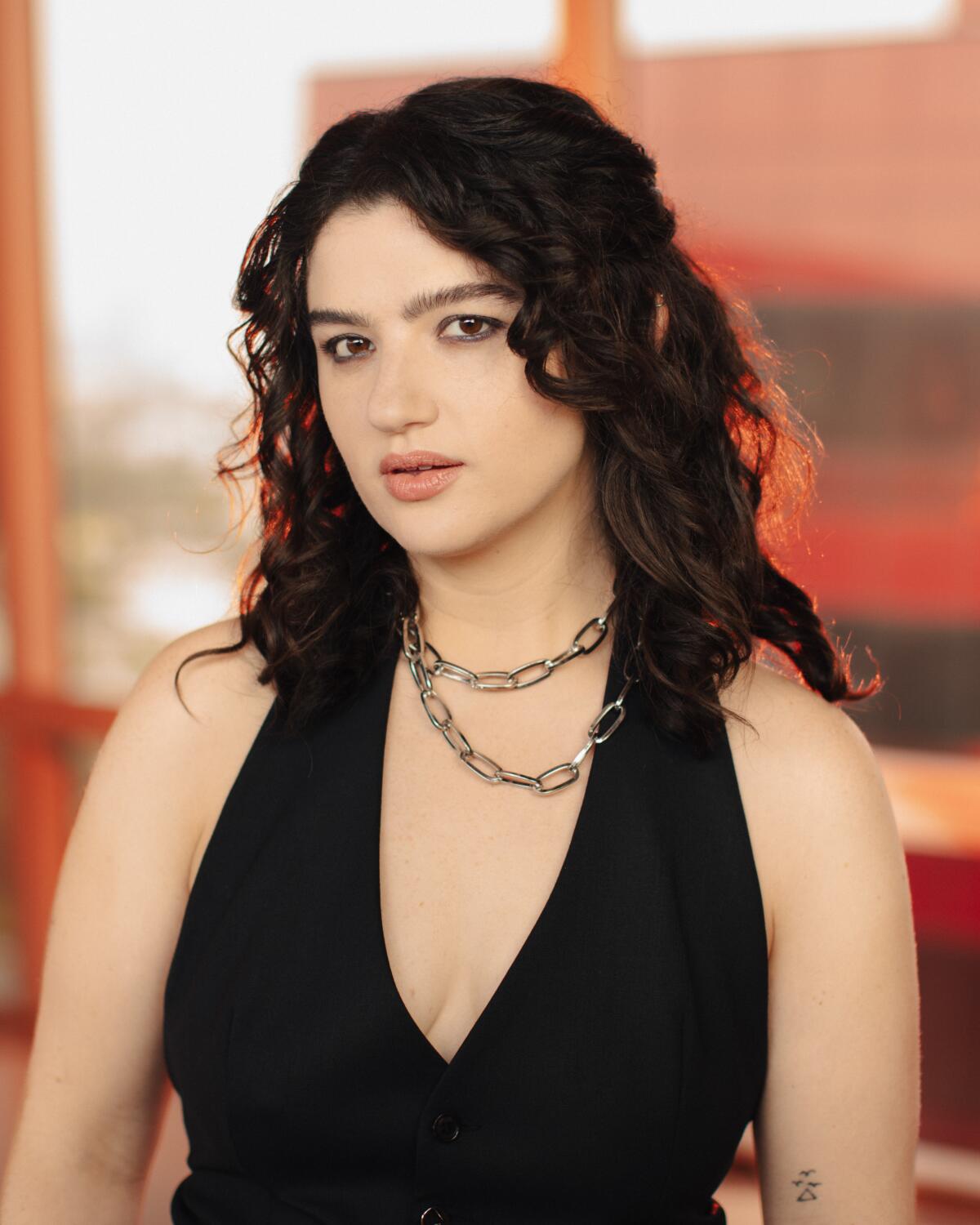
Seligman and Sennott began writing the screenplay for “Bottoms” at the same time they were working on the feature “Shiva Baby.” They pitched the story to Edebiri, for whom they wrote the character of Josie, before they had even finished the script. On the surface, it’s easy to assume that Seligman brings the structure and Sennott brings the jokes, but their collaboration isn’t quite as clear-cut.
“We write these crazy characters, but then you need an actor to inhabit them and make them real people,” says Sennott. “Emma was like, ‘This is how you write plot.’ And I was like, ‘Oh, I’ve never done that before.’ And then I was like, ‘What if we add a penis on the mascot?’ That was us meeting in the middle.”
Filled with horny adolescents, shocking violence and a freewheeling, off-kilter sensibility, “Bottoms” draws influences from previous teen movies, even if they were missing something.
“Looking back, I would’ve loved to have seen more queer female characters,” Seligman says. “But I also would’ve loved to have seen girls beating each other up and fighting to save the day. And I love movies like ‘Scott Pilgrim’ and ‘Kick-Ass’ and ‘Attack the Block’ — movies where a bunch of boys are getting together to be rambunctious and fight and do stuff. And so this was a culmination of a lot of different kinds of movies, with young teen female characters I wish I could have seen.”
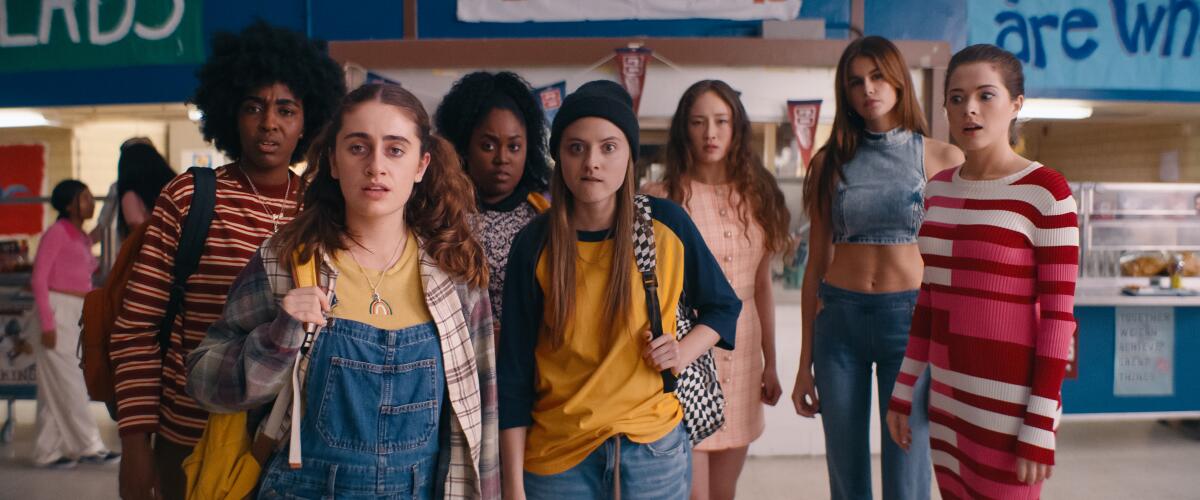
As for women in their late 20s playing teenagers, Sennott says, “The world is so insane that it’s not any stranger than playing people punching each other in the face. They’re all insane.”
Turning to Edebiri, Sennott adds, “I’ll never forget, like, the first day punching each other in the face. That honestly felt so rewarding to get there and be able to do the stunts.”
“Because nothing was just for the sake of doing it,” Edebiri lobs back.
The role of PJ is an extension of Sennott’s screen persona as someone with a curious mix of shame and confidence.
“I think of a younger version of myself, where you want to make the right decisions, but your brain moves so quick and you’re moving with feeling,” she says. “PJ is just following her passion, which is ablaze. She’s following her instinct. That was fun, to revert back to maybe a lesser-evolved version of myself.”
For Seligman, having already made two features that feel distinctly Gen Z, there’s an admitted thrill to getting to where she’s gotten — a place where she’d like to see others go as well.
“I don’t really feel pressure on, like, ‘What’s the next thing?’” the director says. “The fact that I’m making this movie with my best friend that we started writing when we were 21 makes me so excited for the amount of filmmakers of my identity and other identities who I know are coming up right after me, coming up right now.”
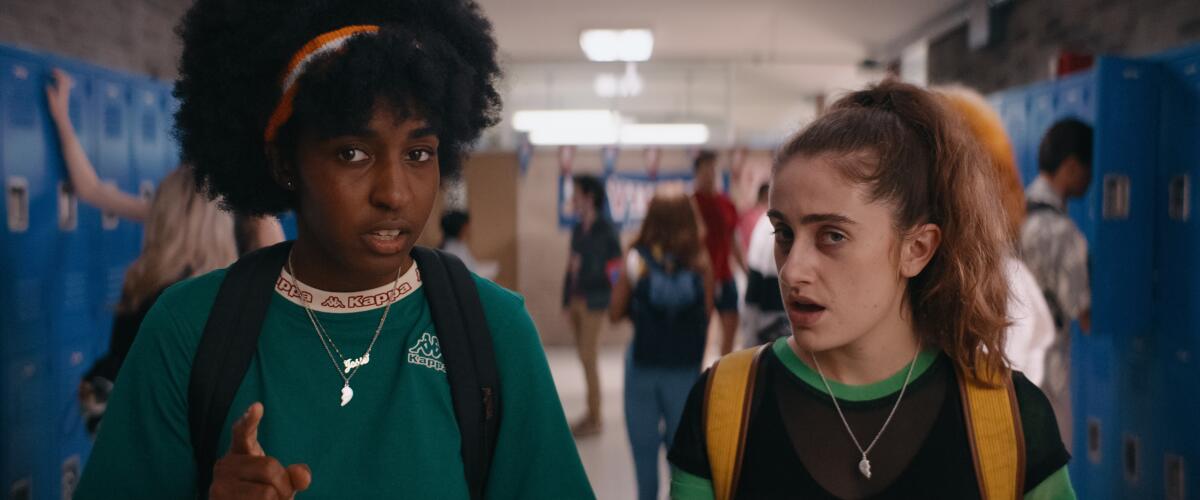
In a Deadline interview out of SXSW, Edebiri said, “Being stupid is a political act.” The phrase serves as an inadvertent statement of purpose for “Bottoms.”
“I’ve had many experiences where things happen and immediately there are 14 questions about my race or my gender or my sexuality or any given permutation at the same time,” Edebiri says. “So often as a marginalized person, people want you to say the right thing or constantly be imbuing things with meaning. Why do I have to give a Ted talk?
“It’s radical to get to be ourselves, to get to be stupid, to get to choose whether to be exceptional or unexceptional,” she continues. “We’re here, and that’s kind of what I have to say. I’m sure if I thought about it more, I can say something more eloquent, but I kind of don’t want to.”
Sennott chimes in, “The quote says it all. It really does.”
For this trio, their decisions are entirely their own. And there’s nothing stupid about that.
More to Read
Only good movies
Get the Indie Focus newsletter, Mark Olsen's weekly guide to the world of cinema.
You may occasionally receive promotional content from the Los Angeles Times.
